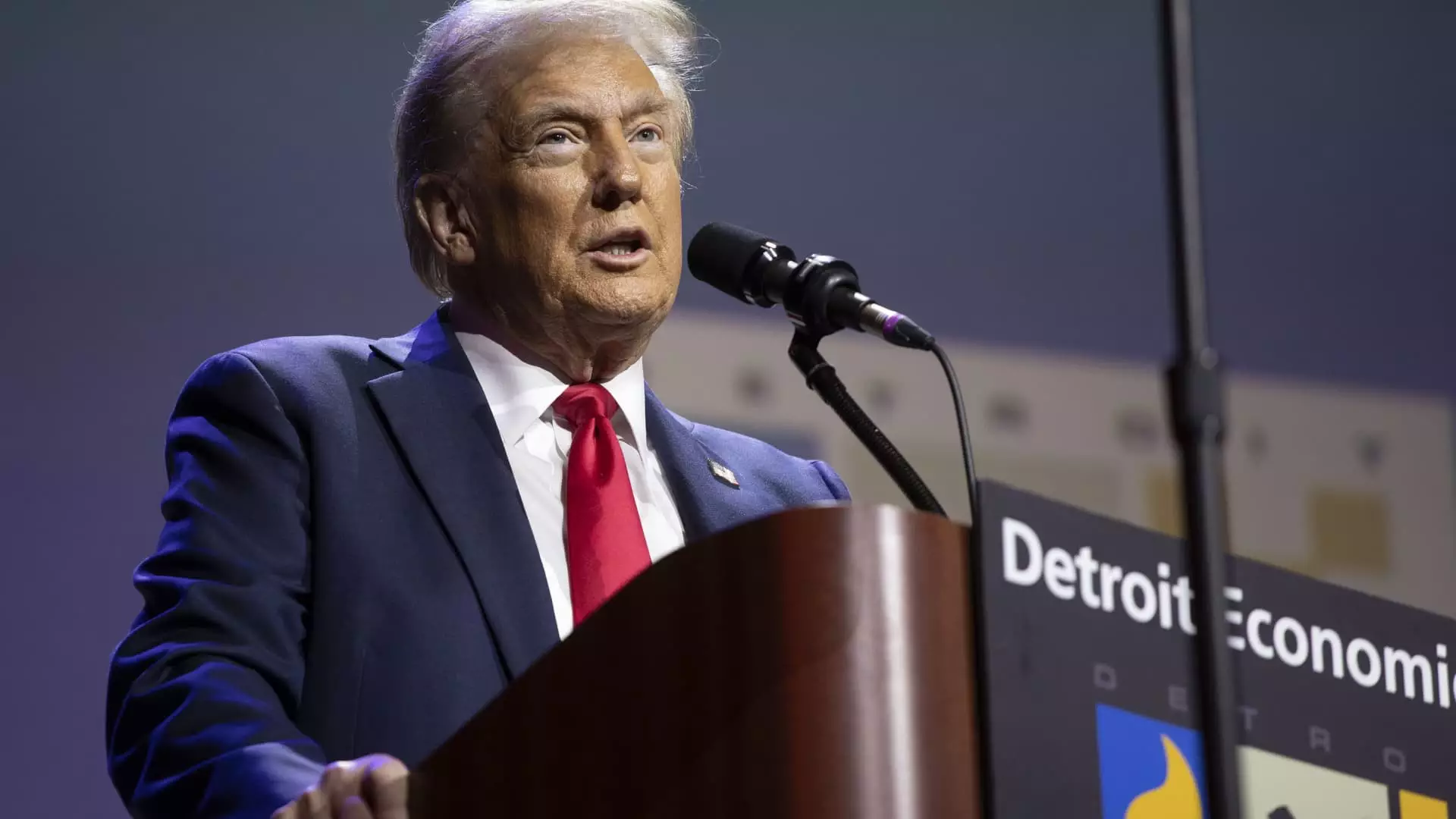The landscape of U.S. trade policy could undergo a significant recalibration should Donald Trump secure the presidency once again. Recent communications from his former trade adviser, Robert Lighthizer, hint at an aggressive reimplementation of tariffs that could reshape economic relations between the U.S. and its trade partners, particularly China. According to reports from Piper Sandler, Lighthizer is allegedly informing Wall Street investors about Trump’s potential plans to introduce severe tariffs soon after returning to office. This kind of dialogue evokes strong reactions from economists and financial strategists alike, indicating the profound impact such policies could have on both domestic and international markets.
Lighthizer reportedly discussed the possibility of implementing a staggering 60% tariff on Chinese imports, alongside a 10% across-the-board tariff, which would be remarkable in scale compared to historical tariff rates. These proposed measures raise concerns among economists about their implications on inflation, consumer pricing, and employment in affected industries. Historical precedents suggest that steep tariffs lead to increased costs for consumers, which could result in broader economic repercussions, particularly for middle- and lower-income families already facing financial strains. Critics of the tariff agenda, including some from the Democratic side such as Kamala Harris, assert that Trump’s tariffs may act as a hidden tax on American families, potentially costing households thousands of dollars annually.
While Trump’s proposed tariff measures warrant scrutiny, they also serve as components of a larger ideological framework aimed at revitalizing American manufacturing and restricting foreign competition. His campaign highlights promise to cut regulations and bolster domestic oil production while cracking down on illegal immigration, portraying these efforts as essential to restoring American jobs. The Republican National Committee echoes this sentiment, arguing that Trump’s approach will yield long-term benefits for American workers—albeit this claim is met with skepticism from several quarters.
Economic analysts point out that the reintroduction of such sweeping tariffs could have a dual effect: while intending to protect U.S. industries, they may also provoke retaliatory measures from trading partners, thereby escalating trade wars and further destabilizing the economy. Key industries, like automotive manufacturing, could experience disruptions as tariffs make imported components and raw materials more expensive. Companies, rather than absorbing these costs, are likely to pass them on to consumers, fuelling inflationary pressures.
The political undertones of Lighthizer’s discussions with Wall Street cannot be overlooked. The camaraderie between Trump and Lighthizer, who has been instrumental in formulating past trade policies, suggests that the former president relies on him as a crucial advisor. With Lighthizer also positioned for a potential Cabinet role, his insights might reflect not only intentions but also strategic political positioning ahead of the upcoming election.
Moreover, by painting tariffs as a solution to the trade imbalance, Trump aims to galvanize his base, appealing to the protectionist sentiment prevalent among many of his supporters. This populist rhetoric hinges on the premise of “America First,” asserting that aggressive tariffs will lead to an economic renaissance in the face of globalization that many feel has betrayed them.
However, there exists a strong chorus of critics—economists, academics, and policymakers—who caution against such a singular focus on tariffs. They assert that shifting the economic burden onto consumers is counterproductive, especially in a post-pandemic recovery phase where many are still reeling from the financial fallout. The Peterson Institute for International Economics has specifically highlighted the impracticality of funding federal programs solely through tariff revenues, arguing that excessive reliance on tariffs could precipitate widespread economic dislocation.
Furthermore, Trump’s assertion that tariffs will not increase consumer prices also invites skepticism. Rising costs of imported goods would complicate his narrative, yet he maintains that these measures are justified as deterrence against unfair trading practices from nations like China. This contradiction lays bare the complexity of the economic policies he champions and the potential fallout they could navigate.
As America stands on the brink of possibly witnessing Trump’s return to the Oval Office, the questions surrounding his tariff strategy grow increasingly pressing. If his administration indeed pursues the ambitious and contentious tariff agenda outlined by Lighthizer, we could see a paradigm shift in the global economic order, shaping everything from everyday commodities to broader trade relations. Whether this will culminate in robust economic revitalization or unforeseen ramifications for American families and businesses remains to be seen, but one thing is clear: the stakes of this trade war could well extend beyond the borders of the United States.

Leave a Reply